Let’s start this time off with a repeat of the map I used in the last post, on Dominica, just a reminder that they’re not the same place….
The Dominican Republic is the second largest nation in the Caribbean, after Cuba. It shares an island with Haiti. The native Taino people settled it in the 7th century CE, starting from five separate fiefdoms which, by late 1492, were in the process of uniting as a single kingdom. But, guess who showed up on the beach on December 5th? Yup, Chris Columbus himself, claiming the whole island for Spain as Hispaniola. While initially a generally friendly wariness ensued, the Taino people were quickly decimated by smallpox and measles, courtesy of the Spaniards. The last “pure Taino” person died in 1864. African slave trade began quickly after the Spaniards arrived, in the first years of the 1500s.
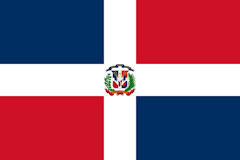 In the middle 1600s, France laid claim to the western side of the island, which hadn’t been developed by the Spanish, and after several battles, the Spanish ceded the region to the French in 1697, who created the colony of Haiti, while the Spanish renamed Hispaniola as Santo Domingo, after its main city, still the capital today. Multiple attempts at independence were unsuccessful until 1821, when the Spanish crown withdrew, and the country was renamed as Spanish Haiti. Multiple attempts were made and then broken at uniting the French and Spanish sides of the island, and in 1861, the former colony appealed to the Spanish crown to resume their status as a colony with protection against the Haitians. Various battles, moments of invasion, including from the US, ensued, and in one form or another, the country has existed as an independent nation since 1924. Whew!
In the middle 1600s, France laid claim to the western side of the island, which hadn’t been developed by the Spanish, and after several battles, the Spanish ceded the region to the French in 1697, who created the colony of Haiti, while the Spanish renamed Hispaniola as Santo Domingo, after its main city, still the capital today. Multiple attempts at independence were unsuccessful until 1821, when the Spanish crown withdrew, and the country was renamed as Spanish Haiti. Multiple attempts were made and then broken at uniting the French and Spanish sides of the island, and in 1861, the former colony appealed to the Spanish crown to resume their status as a colony with protection against the Haitians. Various battles, moments of invasion, including from the US, ensued, and in one form or another, the country has existed as an independent nation since 1924. Whew!
In size, the nation is a little larger than Maryland, though with almost double the population, at 11 million. Intermixing has been the norm for centuries now, and the population is a well blended mixture of indigenous, Spanish, French, English, African, and Middle Eastern (a large influx in the late 1800s) ethnicities. Roughly 70% of the population are Christian, a mix of denominations, though Roman Catholic is the largest group, with the balance mostly declared as “no religion”.
Not surprisingly, the cuisine, too, is a mix of the same cultural origins. Starches predominate, with meat a close second. Vegetables and dairy are not the norm in meals. Initially when it came to the bread component, I was leaning towards cativias, an empanada of sorts, with the “dough” being nothing more than grated, pressed, and molded yuca root, relying on the sticky starchiness to hold it together, and a popular filling of shrimp and tomatoes. In the end though, I wanted to try Pan de Coco, a popular coconut bread, just because it was different from many of my past ventures in this project. For the soup, I could have gone with a sancocho of sorts, but that’s going to come up a lot, as it has in the past on this project, it’s a pretty ubiquitous soup of the entire region, and there wasn’t anything defining about the Dominican Republic version of it. I settled on Aguají, a popular plantain and garlic based soup that’s touted as a pick-me-up and hangover cure.
We have about 200 gm (2 cups) of all-purpose flour, 200 ml coconut milk, 40gm of grated dry coconut (½ cup), ½ Tb of baking powder, ½ tsp of salt, 1½ tsp of sugar, and 60 gm of butter.
Mix the dry ingredients together, rub in the butter, and then add the coconut milk. Don’t add it all at once, because it will depend on your flour. You want it to come together in a soft, but not sticky ball of dough. I ended up using all of it.
Let it rest for a few minutes, then divide into six equal balls, and flatten them out into disks.
Bake in a medium hot oven until golden brown, about 20 minutes.
For our Aguají, we have three plantains, six cloves of garlic, a couple of green onions (or a leek), salt, pepper, oregano, and allspice berries. Now, normally, for the herbs, you’d have cilantro and culantro.
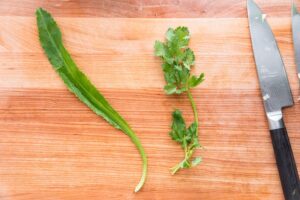
The latter is a leaf with a similar flavor, but it’s not at all the same. It’s not an herb available here, either fresh or dried, that I’ve seen. Some recipes recommended just using more cilantro, others suggested basil, mint, or, more commonly, parsley, to give a more “mixed” flavor than just cilantro. I went with parsley.
Peel the plantains, chop the aromatics.
Wrap the plantains in foil with some vegetable oil and bake in a hot oven for about 35-40 minutes.
Recipes were mixed on what to do then. All agreed that the roasted plantain needed to be crushed, but they varied from just breaking them up into bite sized chunks to crushing them down to nearly a powder. I went somewhere in between with a few pulses of the food processor to get a very coarse meal.
Put all the aromatics and the spices into a pot and add roughly two quarts of water, about 1.8 liters. Bring to a simmer and cook for about 15 minutes.
Add the plantain and return to a simmer, cook for another 10 minutes, stirring occasionally.
Adjust seasoning if need be. I thought it needed a bit more salt.
And, serve.
Okay. It was bound to happen. I just plain disliked everything about this soup. I didn’t like the flavor or texture. I love garlic, but somehow this came across as too garlicky, something I didn’t think was possible, and the herbs, allspice, and plantain, just didn’t work for me. It was out of balance and unpleasant. I couldn’t even eat a bowl of it. Maybe I should have expected that a hangover cure wouldn’t necessarily be pleasant to eat. I like the coconut bread, but not enough that I’d make it again. It was fine. Split, buttered, and warmed, it was quite nice alongside coffee in the morning. Ah well. Guess I should have stuck with a sancocho and the cativias. As I said, it was bound to happen sooner or later.
Next time, we head to a place I’ve at least got a little more familiarity with, Ecuador.
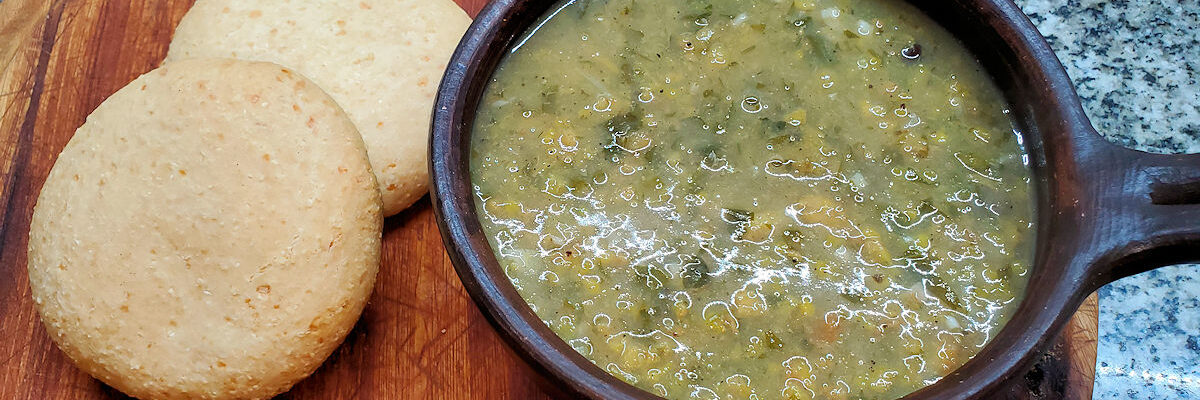
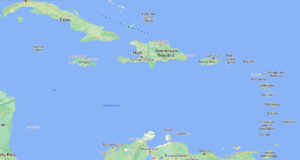
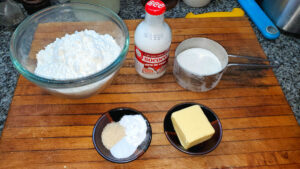
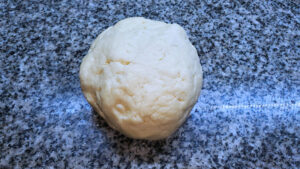


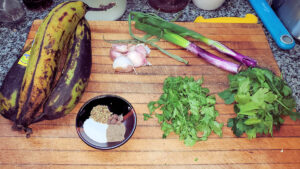
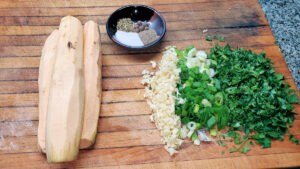
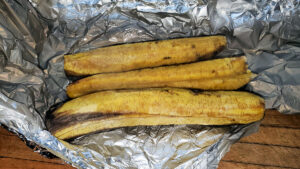
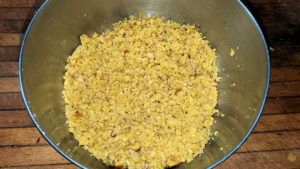
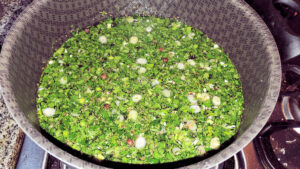
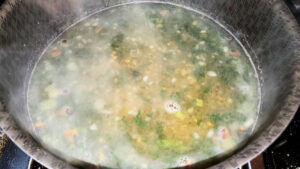
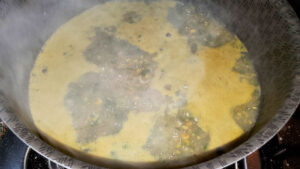
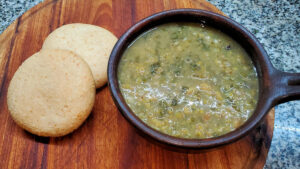
[…] Next time, we’re moving just 600 miles to the northwest and the Dominican Republic. […]